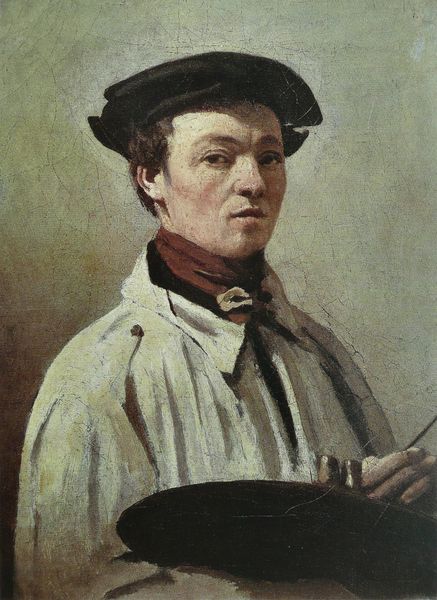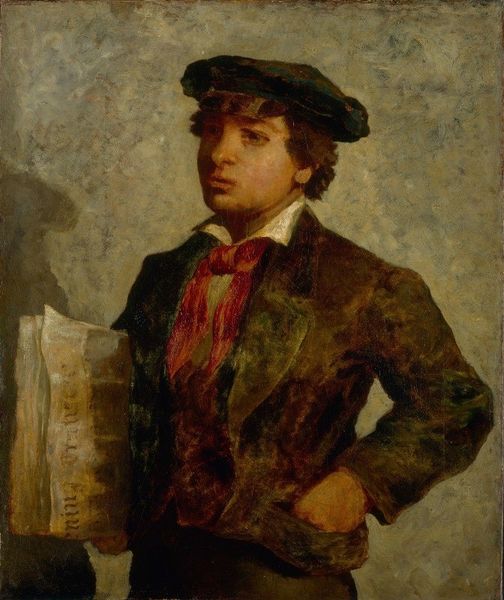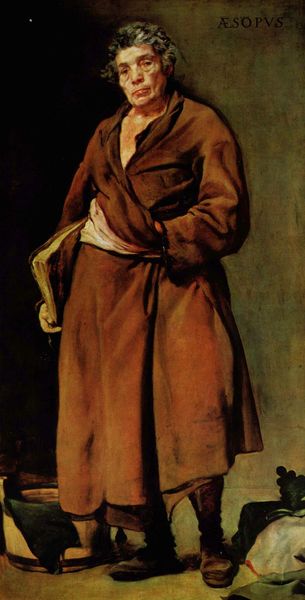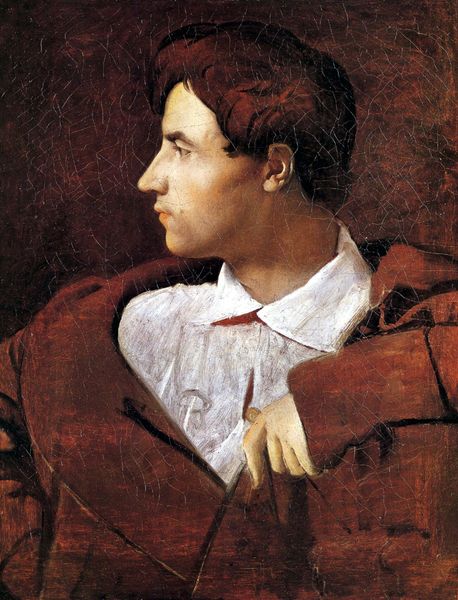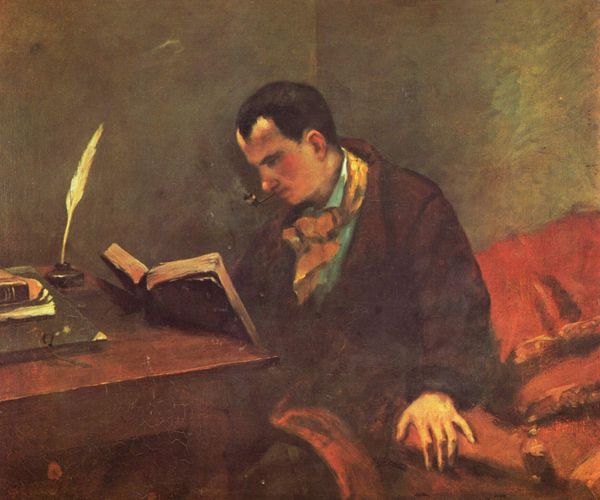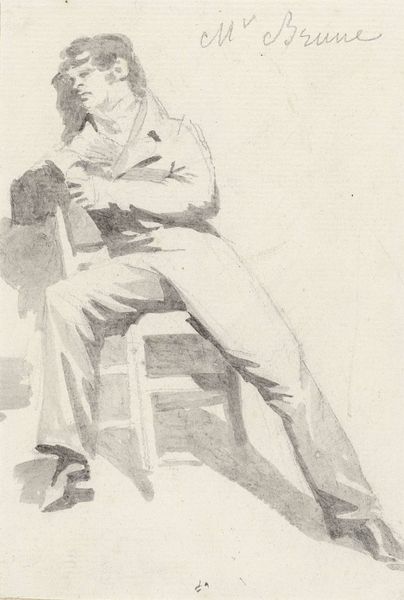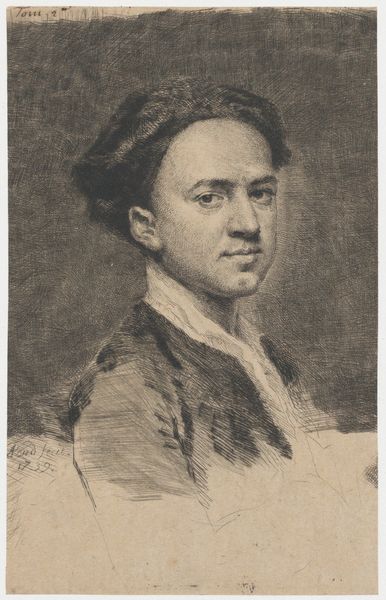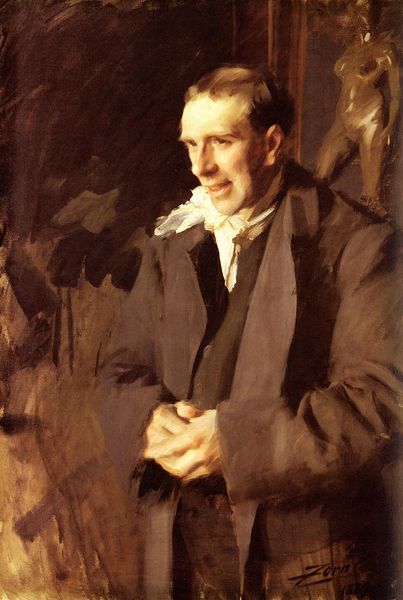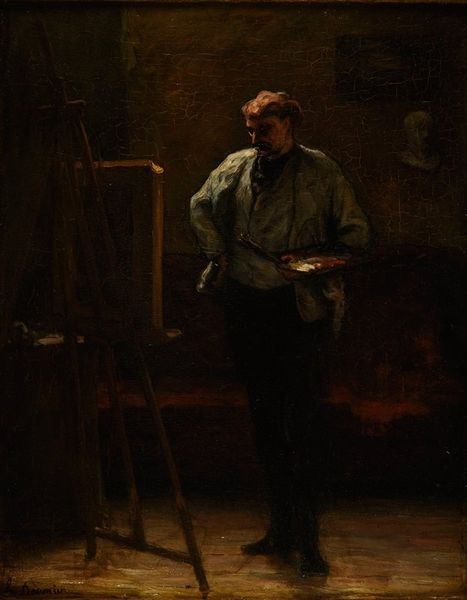
painting, oil-paint
#
portrait
#
self-portrait
#
portrait
#
painting
#
oil-paint
#
romanticism
#
academic-art
Dimensions: 32.5 x 24.5 cm
Copyright: Public domain
Curator: What an evocative image. We're standing before Camille Corot's self-portrait, dating from 1825 and currently housed in the Louvre. The soft glow on his face emerges dramatically from the otherwise dark background. Editor: It’s so raw, so immediate. The brown and grey palette creates an air of intimacy, yet the figure is posed like a statue. There's a sense of the artist wrestling with how he wants to be seen. Curator: Precisely. The darkness in the background recalls the "tenebrism" often seen in religious iconography where shadows amplify the presence of sacred figures. By placing himself within this framework, Corot perhaps hints at the elevated status of the artist. Note also how the palette he holds acts almost as an emblem of his profession. Editor: It’s a beautifully understated palette. The olive jacket, the muted red cravat – he seems acutely aware of how to portray himself. I see an echo of earlier workshop practices. Look at the rough texture in the weave of his coat; Corot is not only the creator of the image but also its fabricator. Curator: Consider the direct gaze – Corot stares outwards, almost confronting the viewer. Do you perceive any apprehension in that gaze? This self-portrait could also be read as an exploration of identity and the anxieties of artistic creation. The shadows are concealing but they highlight certain emotional complexities. Editor: Perhaps. It seems more staged than revealing to me. In foregrounding the means by which paintings get made – through his easel and palette– he offers us a materialist understanding of creativity. This resonates with shifting social attitudes during the rise of Romanticism in Europe. I'd suggest his stare, then, is both defiant and self-aware in the face of new economic forces that would have impacted an artist’s self-perception at the time. Curator: That's insightful. Ultimately, this painting reminds us of art’s capacity to convey complex meanings using relatively simple, symbolic arrangements. It serves as both an invitation and an enigma. Editor: For me, it’s an insight into artistic labor during an era where art production started intersecting more directly with marketplace forces, so, fascinating on many levels.
Comments
No comments
Be the first to comment and join the conversation on the ultimate creative platform.
